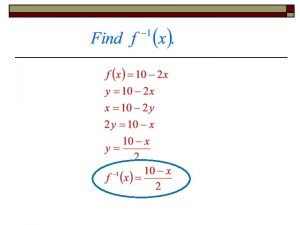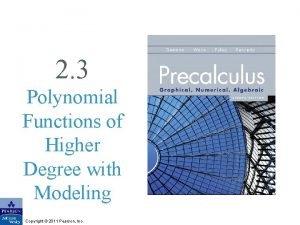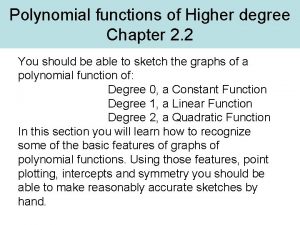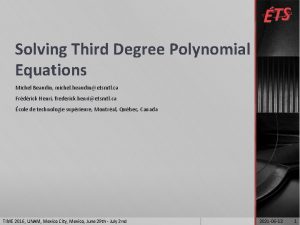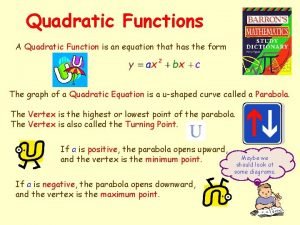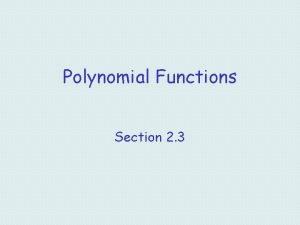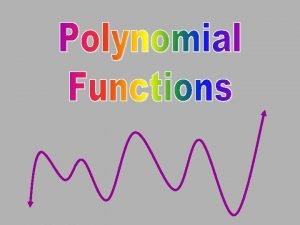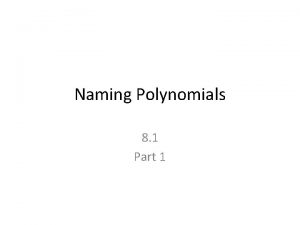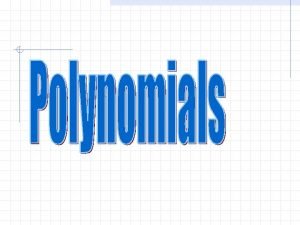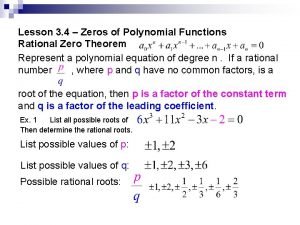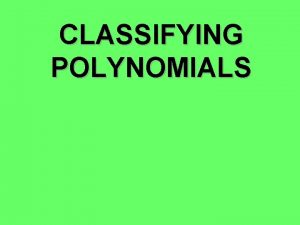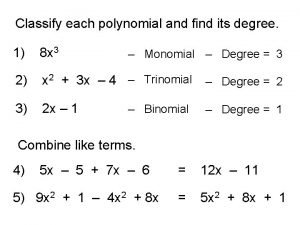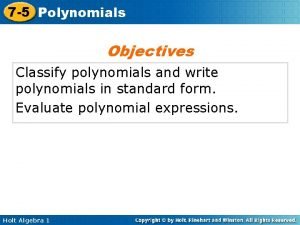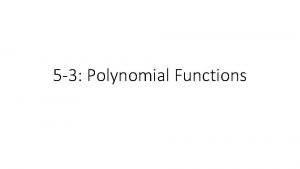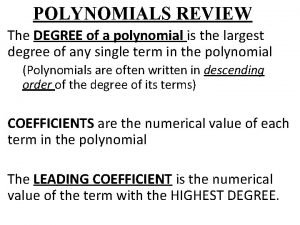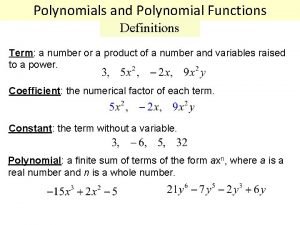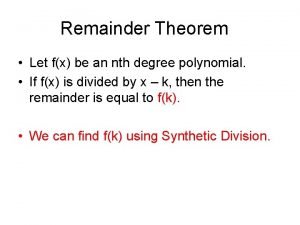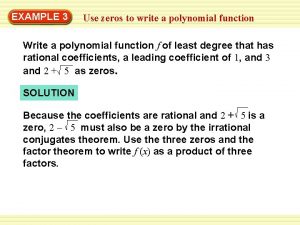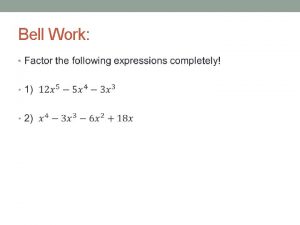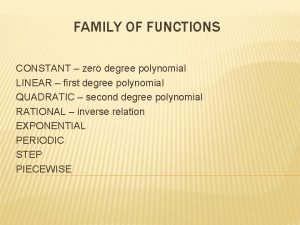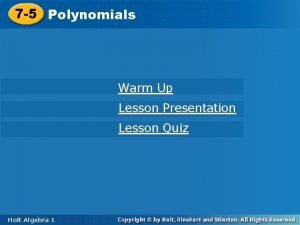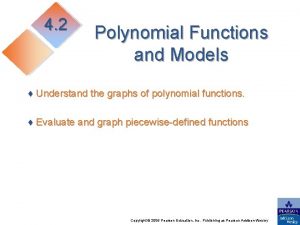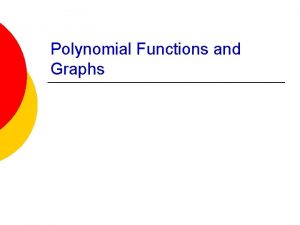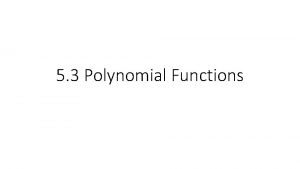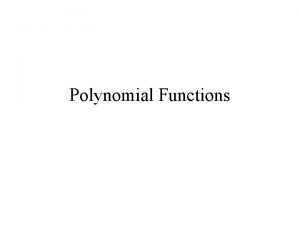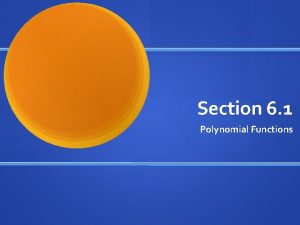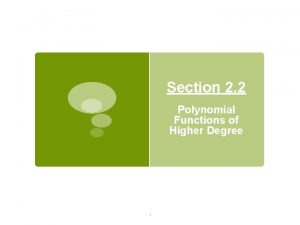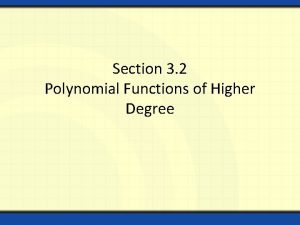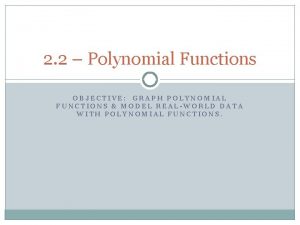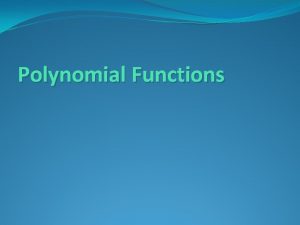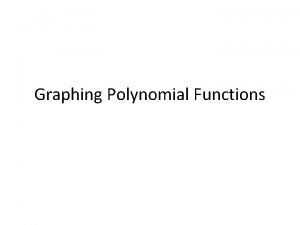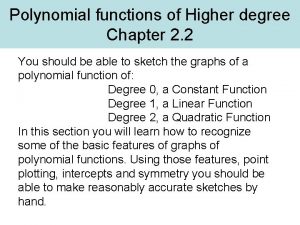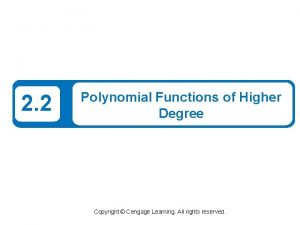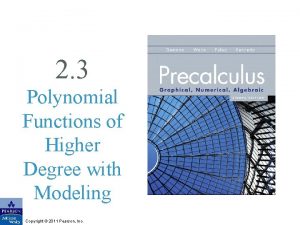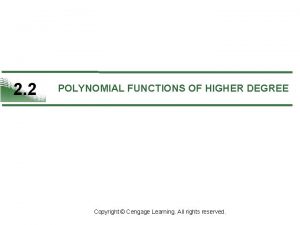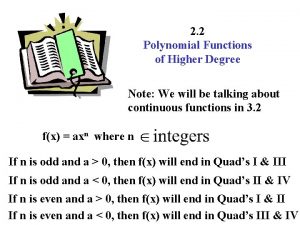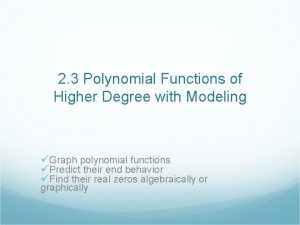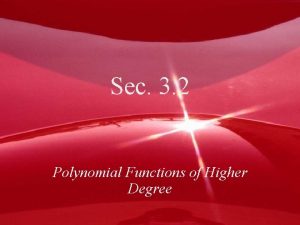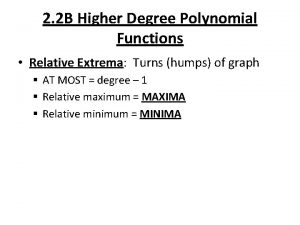Polynomial Functions of Higher Degree Section 2 2





























- Slides: 29


Polynomial Functions of Higher Degree Section 2. 2

Objective Identify End Behavior Recognize Continuity Find Zeros Plot Additional Points

Relevance Learn how to evaluate data from real world applications that fit into a quadratic model.

Explore – Look at the relationship between the degree & sign of the leading coefficient and the right- and left-hand behavior of the graph of the function.

Explore – Look at the relationship between the degree & sign of the leading coefficient and the right- and left-hand behavior of the graph of the function.

Explore – Look at the relationship between the degree & sign of the leading coefficient and the right- and left-hand behavior of the graph of the function.

Continuous Function o A function is continuous if its graph can be drawn with a pencil without lifting the pencil from the paper. Continuous Not Continuous

Polynomial Function o Polynomial Functions have continuous graphs with smooth rounded turns. o Written: o Example:

Explore using graphing Calculator Describe graph as S or W shaped. Function Degree # of U turns

Generalizations? o The number of turns is one less than the degree. o Even degree → “W” Shape o Odd degree → “S” Shape

Describe the Shape and Number of Turns.

Let’s explore some more…. we might need to revise our generalization. o Take a look at the following graph and tell me if your conjecture is correct.

Lead Coefficient Test When n is odd Lead Coefficient is Positive: (an >0), the graph falls to the left and rises to the right Lead Coefficient is Negative: (an <0), the graph rises to the left and falls to the right

Lead Coefficient Test When n is even Lead Coefficient is Positive: (an >0), the graph rises to the left and rises to the right Lead Coefficient is Negative: (an <0), the graph falls to the left and falls to the right

Leading Coefficient: an End Behavior - a>0 a<0 left right n - even n - odd

Use the Leading Coeffiicent Test to describe the right-hand left-hand behavior of the graph of each polynomial function:

Use the Leading Coeffiicent Test to describe the right-hand left-hand behavior of the graph of each polynomial function:

Use the Leading Coeffiicent Test to describe the right-hand left-hand behavior of the graph of each polynomial function:

Use the Leading Coeffiicent Test to describe the right-hand left-hand behavior of the graph of each polynomial function:

A polynomial function (f) of degree n , the following are true o The function has at most n real zeros o The graph has at most (n-1) relative extrema (relative max/min)

Local Max / Min (in terms of y) Increasing / Decreasing (in terms of x)

Local Max / Min (in terms of y) Increasing / Decreasing (in terms of x)

Approximate any local maxima or minima to the nearest tenth. Find the intervals over which the function is increasing and decreasing.

Find the Zeros of the polynomial function below and sketch on the graph:

Find the Zeros of the polynomial function below and sketch on the graph: Multiplicity of 2 – EVEN - Touches

Find the Zeros of the polynomial function below and sketch on the graph:

Find the Zeros of the polynomial function below and sketch on the graph: NO X-INTERCEPTS!

Find the Zeros of the polynomial function below and sketch on the graph:
 Polynomial functions of higher degree
Polynomial functions of higher degree Polynomial functions of higher degree with modeling
Polynomial functions of higher degree with modeling Polynomial
Polynomial Numpy.polynomial.polynomial
Numpy.polynomial.polynomial How to divide a polynomial by another polynomial
How to divide a polynomial by another polynomial Nth degree polynomial function
Nth degree polynomial function Third degree polynomial function
Third degree polynomial function Quadratic polynomial graph
Quadratic polynomial graph How to find the degree of a polynomial graph
How to find the degree of a polynomial graph Whats a monomial
Whats a monomial Degree of polynomial
Degree of polynomial Linear trinomial
Linear trinomial How to determine the degree of a polynomial
How to determine the degree of a polynomial Polynomial names by degree and number of terms
Polynomial names by degree and number of terms Classify polynomials by degree
Classify polynomials by degree Identify the polynomial written in ascending order.
Identify the polynomial written in ascending order. Polynomial names by degree and number of terms
Polynomial names by degree and number of terms Odd degree odd function
Odd degree odd function Xaxxx
Xaxxx Naming polynomials calculator
Naming polynomials calculator Polynomial examples
Polynomial examples What is a polynomial
What is a polynomial If f(x) is a polynomial of nth degree
If f(x) is a polynomial of nth degree Polynomial degree 3
Polynomial degree 3 Polynomial degree 3
Polynomial degree 3 What is the degree of linear polynomial
What is the degree of linear polynomial Zero polynomial
Zero polynomial 7-5 polynomials
7-5 polynomials Polynomial of degree 5
Polynomial of degree 5 Positive leading coefficient graph
Positive leading coefficient graph
